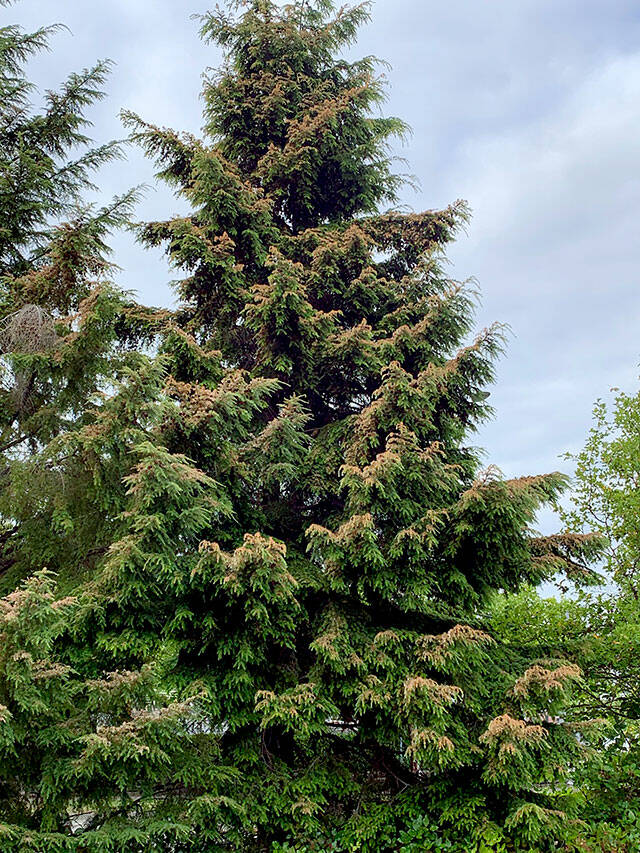EVERETT — Last summer, it got too hot for Washington’s trees.
The needles of ubiquitous evergreens turned reddish hues.
No, our famous and much loved conifers weren’t showing off an out-of-character autumnal wardrobe. They got singed, quite literally, during last year’s historic heat wave, when temperatures in Snohomish County reached triple digits.
The damage was from something called “desiccation,” or the removal of moisture.
That’s according to an annual forest health report from the state Department of Natural Resources. Forest scientists with the department and the U.S. Forest Service took to the air to survey about 19 million acres of forests across Washington, looking for evidence of disease and other health problems. The report recorded “some level of tree mortality, tree defoliation, or foliar disease” in about 555,000 forested acres across Washington.
That’s about 100,000 fewer acres from 2019, but as Natural Resources noted, the 2021 survey omitted nearly 3 million acres because of wildfires.
“Scientists determined the record-breaking heatwave that occurred in late June of last year to be responsible for at least 84,000 acres of desiccation damage to conifer crowns, primarily in western Washington,” a news release stated.
That was likely an undercount.
The most damage was observed in the Cascade foothills of Snohomish, King and Lewis Counties, as well as the west side of the Olympic Peninsula and western Pacific County.
“The long-term impact of needle desiccation is not well studied,” the report notes, “and it is assumed that larger well-established and otherwise healthy trees will be able to recover from this desiccation event.”
Still, the red-tinged trees are just one more visual of the growing list of impacts caused by climate change, which a consensus of scientists attribute to human activity.
The report also tracked other effects on forest health. For the first time, scientists found a sooty bark disease on maple trees outside of the greater Seattle area. The fungal infection was recorded up in Bellingham, down in Olympia, and as far east as Rattlesnake Lake near North Bend.
“This comprehensive accounting makes clear the impacts our worsening climate crisis have on our forests and the urgency of our efforts to combat our forest health crisis in Washington,” said Public Lands Commissioner Hilary Franz.
Last year was marked by climate change. People died in the heat. Drought struck much of Washington. And wildfires rampaged across the American West.
The health of our trees can foreshadow what’s to come. Forests weakened by drought, insects or disease are “less resilient and pose a greater risk for catastrophic wildfires,” Franz said.
Zachariah Bryan: 425-339-3431; zbryan@heraldnet.com. Twitter: @zachariahtb.
Talk to us
> Give us your news tips.
> Send us a letter to the editor.
> More Herald contact information.

























